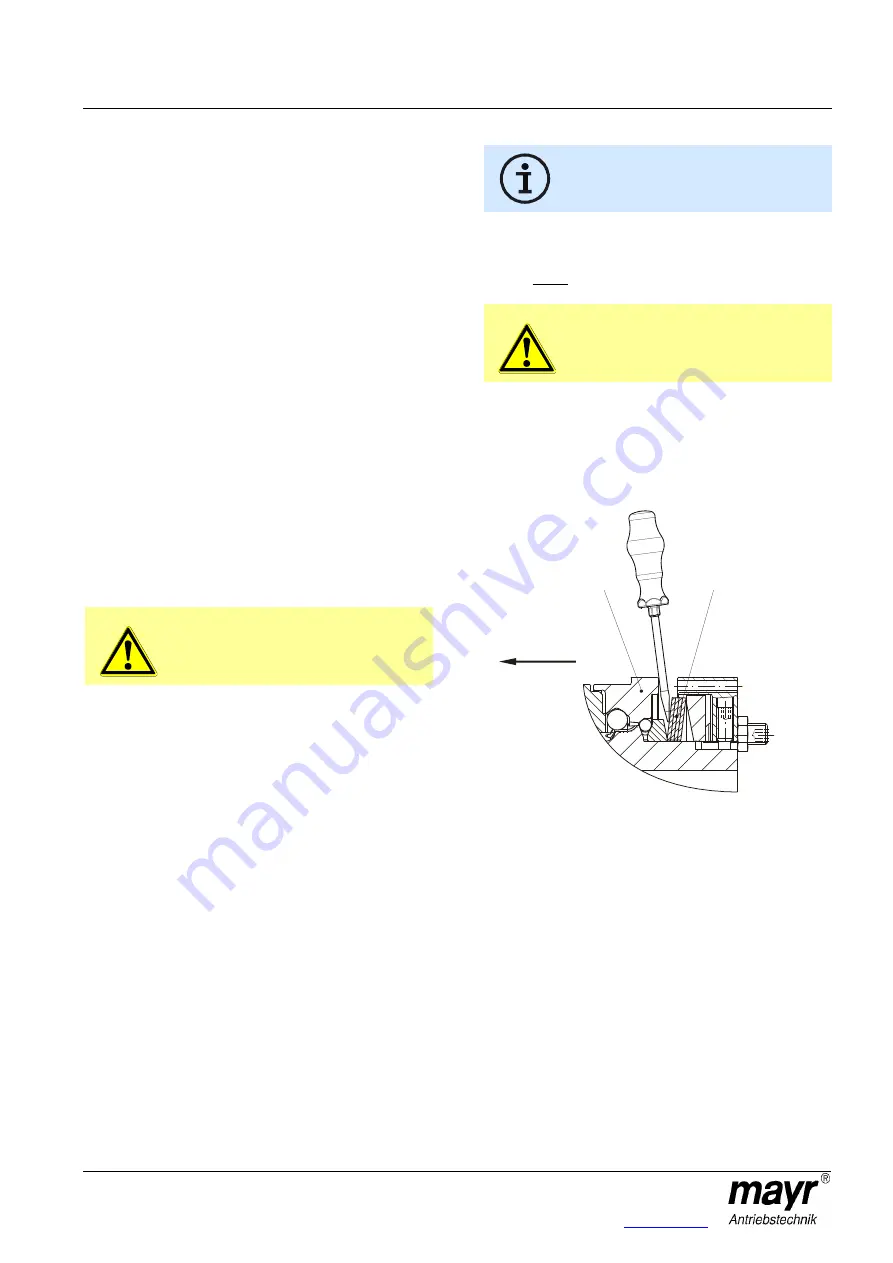
Installation and Operational Instructions for
EAS
®
-Compact
®
overload clutch,
Type 49_._ _4._ Sizes 4 and 5
(B.4.14.6.GB)
25/01/2013 GC/NH/GH/SU
Chr. Mayr GmbH + Co. KG
Tel.: +49 8341 804-0
Eichenstraße 1
Fax: +49 8341 804-421
D-87665 Mauerstetten
www.mayr.com
Page
9
of
21
Germany
E-Mail:
Design
The EAS
®
-Compact
®
overload clutch is designed as a
mechanical disengaging overload clutch according to the ball
detent principle.
State of Delivery
The clutch is manufacturer-assembled and set to the torque
stipulated in the order.
Unless the customer requests a particular torque setting, the
clutch will be pre-set to approx. 70 % of the maximum torque.
The adjusting nut (7) is marked with dimension "a" (70% of the
maximum torque, see Figs. 1 and 18).
Please check state of delivery!
Function
The clutch protects the drive line from excessively high,
unpermitted torque impacts which can occur due to unintentional
blockages. After overload has taken place, the transmitting
mechanism is completely disconnected. Only the bearing friction
continues to have an effect.
This means that no re-engagement impacts or metallic sliding
movements occur on the clutch torque transmission geometries
when using this clutch variant.
When in operation, the set torque is transmitted backlash-free
onto the output from the motor shaft via the EAS
®
-Compact
®
overload clutch (pressure flange (2)). If the set limit torque
(overload) is exceeded, the clutch disengages. The input and the
output are separated residual torque-free.
An installed limit switch registers the disengagement movement
and switches off the drive.
After-acting masses can run free
.
CAUTION
The clutch has no load-holding function after
overload occurrence!
Re-engagement
Re-engagement must only take place when the
device is not running or at low differential
speeds (< 10 rpm).
EAS
®
-Compact
®
overload clutch re-engagement is carried out by
applying axial pressure to the thrust washer (3).
For this, the following procedures are possible:
By evenly screwing three screws M8 (not included in
delivery) into the adjusting nut (7).
CAUTION
After re-engagement has taken place, the three
hexagon head screws must be removed
immediately, as they could stop the clutch
functioning (blockage).
By using two screwdrivers, applied opposite each other
and supported by the cup springs (11), see Fig. 10.
By using an engagement mechanism.
The engagement procedure can also be automated using
pneumatic or hydraulic cylinders.
On all variants, it may be necessary to turn between the clutch
input and output sides slightly.
Fig. 10
General Installation Guidelines
As a standard, the bores in the hubs (1, 23, 26, 32, 36, 39) are
produced with H7 tolerances, the bores in the clamping hubs
(21) with F7 tolerances.
The surface roughness depth in the bores is produced with
Ra = 1,6 µm.
11
3
Re-engagement
direction





















